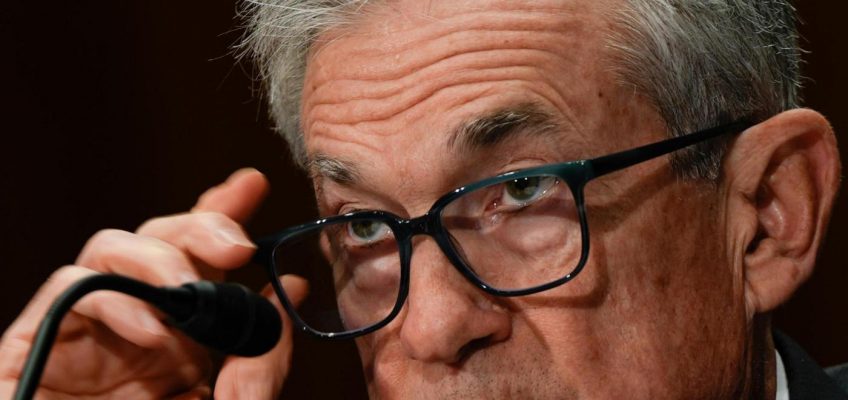On the heels of torrential flooding, City Limits caught up with Sunset Park community leader, Elizabeth Yeampierre, to talk about federal cuts to natural disaster protections and how communities can come together to survive extreme weather.
BROOKLYN, N.Y. — Elizabeth Yeampierre, executive director of UPROSE, a grassroots organization promoting climate justice in Sunset Park, Brooklyn, Wednesday, July 23, 2025.
As New York City grapples with extreme weather like last week’s torrential rains, which halted traffic and flooded the subway system, a Trump administration decision from earlier this spring to cut federal funding for natural disaster protection hits hard.
But Elizabeth Yeampierre, executive director of the grassroots environmental organization UPROSE, says the way forward is to create a neighborhood plan to face severe weather events that grow stronger as climate change worsens.
“People are starting to realize that the solutions are hyper-local and that their relationships with each other are going to be central to us being able to survive the next big storm,” Yeampierre said.
In Brooklyn’s Sunset Park, her organization has been training people to take on green jobs, hosting workshops on how to prune trees and build community gardens that collect stormwater before it floods the streets.
And they host community-led conversations on how neighborhoods can respond to severe weather. That could include building an inventory of residents that have emergency preparedness skills, from nurses who could care for the injured to leaders who could act as first responders or construction workers who could help rebuild.
This approach, Yeampierre says, protects communities at a time when they can’t count on the federal government to protect them from flash floods and storms.
In April the Trump administration decided to shut down a program run by the Federal Emergency Management Agency (FEMA) that supports critical infrastructure across the country, protecting communities from disasters before they happen.
New York’s Attorney General joined a coalition of 19 states last week in suing the Trump administration for shutting down the program.
Known as the Building Resilient Infrastructure and Communities (BRIC) program, the initiative gave nearly 2,000 projects $4.5 billion over the past four years to safeguard cities from climate catastrophes, according to the New York Attorney General.
Given that coastal communities face the biggest threats from flooding, New York is among the states that received the most money from the program, totalling over $380 million for 38 BRIC projects.
That included, for instance, a $50 million grant for the Central Harlem Cloudburst Flood Mitigation Project, which paid for flood prevention measures to protect over 45,000 city residents from flash flooding of the Harlem River.
But the Trump administration questions the importance of the initiative.
“The BRIC program was yet another example of a wasteful and ineffective FEMA program,” FEMA reportedly said in a news release at the time, which has since been taken down from the agency’s website.
FEMA “should be terminated” as the agency “has been slow and totally ineffective,” President Donald Trump said on Truth Social.
Among the defunded BRIC projects was a $50 million grant for flood protections along the Harlem River. (Photo by Adi Talwar)
“Individual states should handle storms etc as they come. Big savings, far more efficient,” he added on the social media platform.
But Yeampierre says FEMA provides food, health care, and shelter when disaster strikes, and that undermining it will hurt communities across the city.
An activist and co-chair of the Climate Justice Alliance—a national non-profit that also suffered federal funding cuts—Yeampierre spoke with City Limits about the slashes to FEMA and how a neighborhood approach to the climate crisis could save lives.
This conversation has been edited and condensed for clarity.
Tell us about the work that you do and why it’s important to your community?
UPROSE was founded in 1966, it’s the oldest Latino community based organization in Brooklyn. Next year it turns 60. And next year I will have been here 30 years, so I’ve seen a lot.
Basically our organization listens to the community and follows the community’s charge. So when it comes to climate we are doing environmental justice work because that’s what the community said was important.
It did take a while to get the community involved because not everyone saw how climate change was affecting them back in the early 2000s.
But then there was a tornado that hit this part of Brooklyn [in 2007] and after that people started showing up. We started having sinkholes in Sunset Park and then Superstorm Sandy happened.
Sandy became sort of like the marker, where all of a sudden the base of people interested in environmental issues in Sunset Park started growing. Old oak trees were uprooted and fell all over the place. Being in the park was dangerous because anything could fall and kill you.
But Sunset Park was not impacted the way that Red Hook was, which is our sister community, we found them under seven feet of water. So people here set themselves up to help Red Hook, to help the Rockaways, so it kind of became this place where people were dispatched to go to different places to help them.
What was that community effort like?
[Right after Sandy happened] we called for a meeting and it was packed. Everybody came, and I remember because it was a storefront that we had before we moved into our current office, and there were just so many people. And all we did was ask: what do you want us to do, what should it look like, and what are your ideas?And the ideas were mind-blowing.
One was a block-to-block organizing effort where we could identify one person per block who could act as a first responder. In everybody’s block there is always a lady at her window, who knows which of her neighbors is on dialysis, who knows everybody’s business, who is hooking up with who. And that’s your first responder, that’s your organizer. And so we started organizing block by block and identifying projects that they would want to do together on each block to prevent flooding in the future.
We identified places where people could grow gardens behind their houses to soak up the water when it rained and then share food. We did workshops on how to build a stormwater barrel and what it cost and where they could get the supplies, and our young people made a video about that.
So we started identifying interventions that were accessible and affordable to people. Because the other thing that we heard from the community is that addressing climate change was expensive, and only the gentrifiers could afford these things and that they couldn’t. And so little by little, we basically started educating the community about all the different kinds of things that they could do together.
How does losing FEMA funding impact the community in times of crisis?
First let me begin by saying that I don’t want to romanticize FEMA. It needs to be reformed because it doesn’t serve our communities in the best way. The resources have been allocated in a discriminatory way. We have seen climate disasters where communities of color died in the thousands, but white communities got so much more money [from FEMA] even though they lost fewer lives.
Flood damage in Woodside, Queens, following Hurricane Ida in 2021. (Michael Appleton/Mayoral Photography Office)
But FEMA funds do make it possible for people to get up from under the rubble, gather their lives and recover from serious life-threaning events. When you think about the need for FEMA, think about tornadoes. Think of a Category 5 hurricane, think of an event that is massive in size and leaves places looking like a war zone, right?
So FEMA is supposed to make it possible for people to get health care and a place to live.
And so basically, what the federal administration is saying by defending that it should be terminated is that at the hardest moment in a family’s life, in a person’s life, when they need the federal government to show up the most so that they can survive, that they are not going to be there for them. That’s what they’re telling them, and that’s not an exaggeration.
They’re basically telling them that you’re on your own.
So I think that message to our communities has to come through: we are on our own. And what do we do when the government fails us, when it’s not available? What do we do for each other? We build community.
We work to complement each other and work in a way that is deeply collaborative and complementary.
What are some examples of what can be done?
We’ve been meeting with churches and people from our own base and teachers that are really pretty freaking badass and we are forming a collective of people from the neighborhood to build our own sustainable community. Saturday we had a workshop that was packed with everybody who came to learn to get their certificate on tree pruning, because that’s a green job.
During the winter we have these learning circles in the basement of a local church where we talked about what do you do if there’s an extreme weather event, what can we do on the block? The questions were really open to get the neighborhood and the people to really think critically about what they could do.
One woman said, well we can find out who in our building knows how to do first aid and who is a nurse? Who knows how to do construction and who knows how to fix things, who knows how to grow things? And then somebody can check in on the elders, and we can find out what medication they take? What do they need? We can make a list. We can create a list in our building and then on our block. We can create an inventory.
And they went on and on. Once they were asked, they were already thinking about how we take care of each other. So that is the conversation that’s been happening in a real granular way.
People are starting to realize that the solutions are hyper local and that their relationships with each other are going to be central to us being able to survive the next big storm.
You have to invest in communities. Communities have the solutions. They have the answers and you have to trust that they know how to do it.
To reach the reporter behind this story, contact Mariana@citylimits.org. To reach the editor, contact Jeanmarie@citylimits.org
Want to republish this story? Find City Limits’ reprint policy here.
The post ‘Solutions are Hyper-Local’: Brooklyn Climate Organizer On Facing the Next Big Storm As Feds Pull Support appeared first on City Limits.




